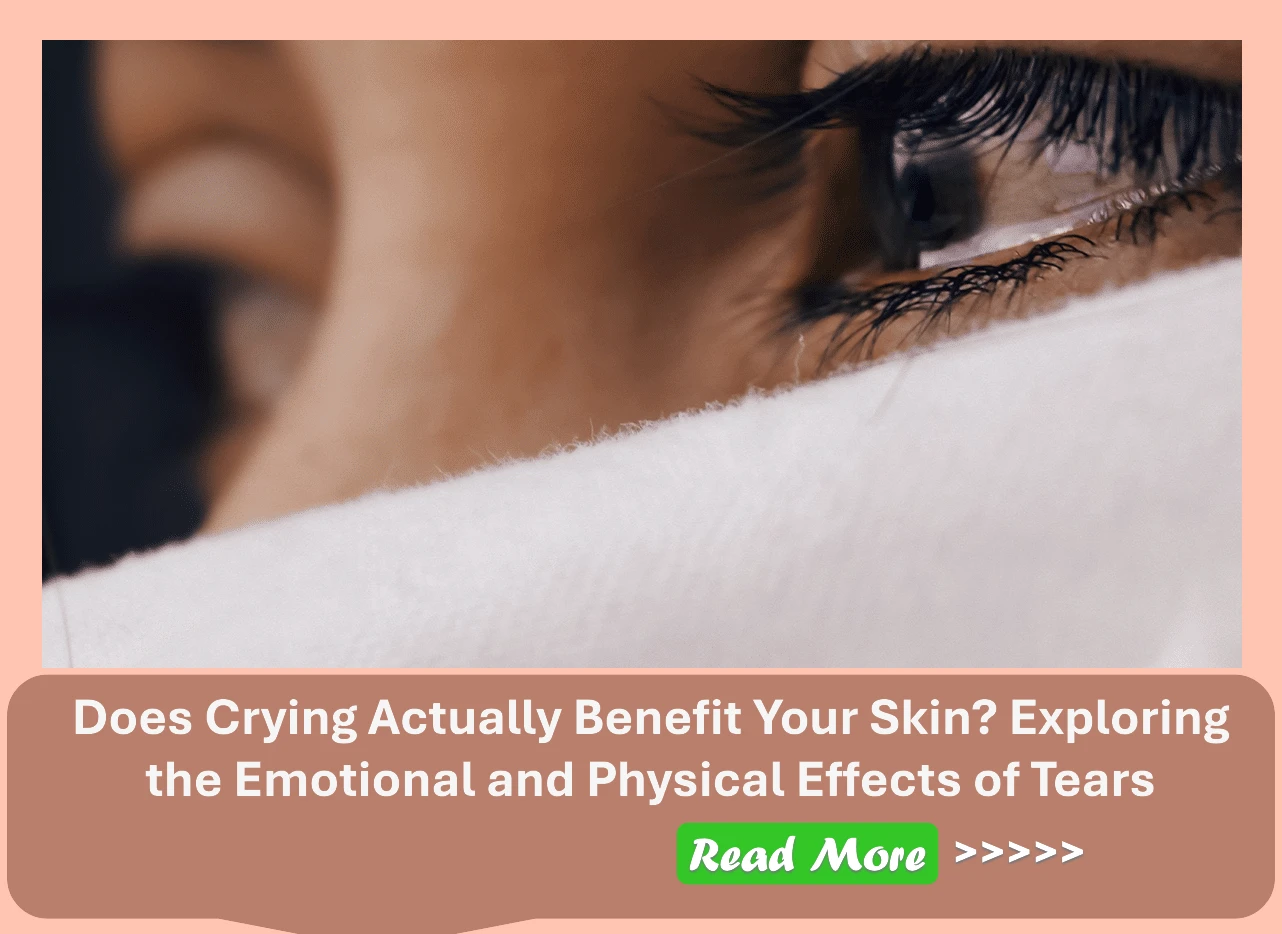Does Crying Actually Benefit Your Skin? Exploring the Emotional and Physical Effects of Tears
Does Crying Actually Benefit Your Skin? Exploring the Emotional and Physical Effects of Tears
We’ve all felt the release that comes with a good cry—whether from sadness, stress, or even joy. But beyond its emotional impact, many people wonder: Does crying actually benefit your skin? While crying is primarily an emotional response, it does have some interesting effects on your face. Let’s explore what really happens to your skin when you cry and separate the myths from the facts.
What’s in Your Tears?
Tears aren’t just water. They’re made up of three main layers:
-
Water (aqueous layer): Keeps eyes moist.
-
Oil (lipid layer): Prevents evaporation.
-
Mucus (mucin layer): Helps spread tears evenly across the eye surface.
Tears also contain electrolytes (like sodium and potassium), enzymes, and proteins. Interestingly, emotional tears can include stress hormones and natural pain relievers, such as leucine enkephalin.
Can Crying Benefit Your Skin Directly?
While tears have important functions for your eyes—like keeping them lubricated and removing debris—the benefits for your skin are less direct. Here’s what really happens:
✅ Temporary Increased Blood Flow:
When you cry, the blood vessels in your face (especially around your eyes and cheeks) dilate. This temporary increase in circulation can leave your skin looking slightly flushed or brighter right after crying. It’s a short-lived effect but can give your face a brief glow.
✅ Emotional Stress Relief:
The real “beauty benefit” of crying comes from reducing emotional stress. High stress levels raise cortisol in the body, which can worsen skin issues like acne, eczema, and inflammation. By releasing built-up emotions, crying can help lower cortisol levels over time, indirectly benefiting your skin.
Possible Downsides for Skin
While crying might bring emotional relief, it can also cause a few short-term skin concerns:
-
Redness and Puffiness: Blood vessel dilation and fluid accumulation can make your eyes and cheeks appear swollen or puffy.
-
Dryness and Irritation: Tears are salty, and salt can draw moisture out of your skin, leading to dryness or sensitivity.
-
Fine Lines: Rubbing your eyes or wiping tears harshly can tug on delicate skin and potentially lead to fine lines over time.
-
Temporary Breakouts: If you cry and then touch your face with unwashed hands, bacteria and oil can transfer to your skin, which may cause pimples.
Tips to Protect Your Skin When You Cry
To avoid irritation or dryness after crying, consider these gentle tips:
-
Pat, don’t rub: Blot tears with a soft tissue instead of wiping roughly.
-
Hydrate afterward: Use a gentle moisturizer or hydrating mist to restore moisture.
-
Cold compress: Helps reduce puffiness and redness around the eyes.
-
Wash your hands: Avoid transferring bacteria to your face while wiping away tears.
The Bottom Line
Crying doesn’t directly “detoxify” your skin or act as a skincare treatment. But it can support your skin health indirectly by reducing emotional stress, which is closely tied to common skin problems. The flushed, glowing look after crying is mainly from temporarily boosted circulation—not a long-term effect.
Ultimately, crying is a natural, healthy emotional process. While it won’t transform your skin, embracing your tears without guilt can help you feel calmer and, in its own subtle way, contribute to a healthier, more balanced complexion.

Related Blog
What Causes Oily Skin and Can It Be Managed Naturally? Exploring Root Causes and Gentle Solutions
Aug 2, 2025 by Admin
General
What Are the Signs That You Have Sensitive Skin? Key Symptoms to Help You Identify This Delicate Skin Type
Aug 1, 2025 by Admin
General